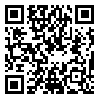Volume 25, Issue 12 (3-2019)
RJMS 2019, 25(12): 33-42 |
Back to browse issues page
Download citation:
BibTeX | RIS | EndNote | Medlars | ProCite | Reference Manager | RefWorks
Send citation to:



BibTeX | RIS | EndNote | Medlars | ProCite | Reference Manager | RefWorks
Send citation to:
Mohaddes Ardebili F, Mehmandar M, Bozorgnejad M, Khalili E, Hosseini A F, Mobaderi T. The effectiveness of multimedia self-care education on burn patients’ quality of life: An application of latent growth model. RJMS 2019; 25 (12) :33-42
URL: http://rjms.iums.ac.ir/article-1-5380-en.html
URL: http://rjms.iums.ac.ir/article-1-5380-en.html
Fatemeh Mohaddes Ardebili 

 , Mohammadreza Mehmandar *
, Mohammadreza Mehmandar * 

 , Mehri Bozorgnejad
, Mehri Bozorgnejad 
 , Ehsan Khalili
, Ehsan Khalili 

 , Agha Fatemeh Hosseini
, Agha Fatemeh Hosseini 
 , Tofigh Mobaderi
, Tofigh Mobaderi 




 , Mohammadreza Mehmandar *
, Mohammadreza Mehmandar * 

 , Mehri Bozorgnejad
, Mehri Bozorgnejad 
 , Ehsan Khalili
, Ehsan Khalili 

 , Agha Fatemeh Hosseini
, Agha Fatemeh Hosseini 
 , Tofigh Mobaderi
, Tofigh Mobaderi 


Faculty of Traffic Police, Amin Police University, Tehran, Iran , majidmehmandar@gmail.com
Abstract: (4257 Views)
Background: Burn injury is one of the most important causes of mortality and disability in the world, which affects all aspects of the Survivors quality of life. The aim of this study was to investigate the effect of multimedia self-care training on quality of life in burn patients using Latent Growth Model.
Methods: This study is a randomized controlled clinical trial that was conducted on 100 burn patients referred to Shahid Motahari hospital in Tehran, 2015. The burn patients were allocated into intervention (n=50) and control (n=50) groups, randomly. The intervention group received the CD of self-care education and uses it during the six-month period. The data was collected using the Burn Specific Health Scale – Brief questionnaire before, 3 and 6 months after intervention and then the latent growth model was used to evaluate and compare mean score patterns of intervention and control groups.
Results: The latent growth model results showed that the increasing pattern of the mean score of quality of life (all aspect of quality of life) in intervention group was significantly higher than the control group (p<0.05). Also, burn percentage had a significant negative impact on the patient’s quality of life (p<0.05).
Conclusion: The multimedia self-care education improves the burn patient’s quality of life. Therefore, it is recommended for medical teams to use multimedia self-care training in order to improve burn patient’s quality of life.
Methods: This study is a randomized controlled clinical trial that was conducted on 100 burn patients referred to Shahid Motahari hospital in Tehran, 2015. The burn patients were allocated into intervention (n=50) and control (n=50) groups, randomly. The intervention group received the CD of self-care education and uses it during the six-month period. The data was collected using the Burn Specific Health Scale – Brief questionnaire before, 3 and 6 months after intervention and then the latent growth model was used to evaluate and compare mean score patterns of intervention and control groups.
Results: The latent growth model results showed that the increasing pattern of the mean score of quality of life (all aspect of quality of life) in intervention group was significantly higher than the control group (p<0.05). Also, burn percentage had a significant negative impact on the patient’s quality of life (p<0.05).
Conclusion: The multimedia self-care education improves the burn patient’s quality of life. Therefore, it is recommended for medical teams to use multimedia self-care training in order to improve burn patient’s quality of life.
Type of Study: Research |
Subject:
Educational Nursing
Send email to the article author




